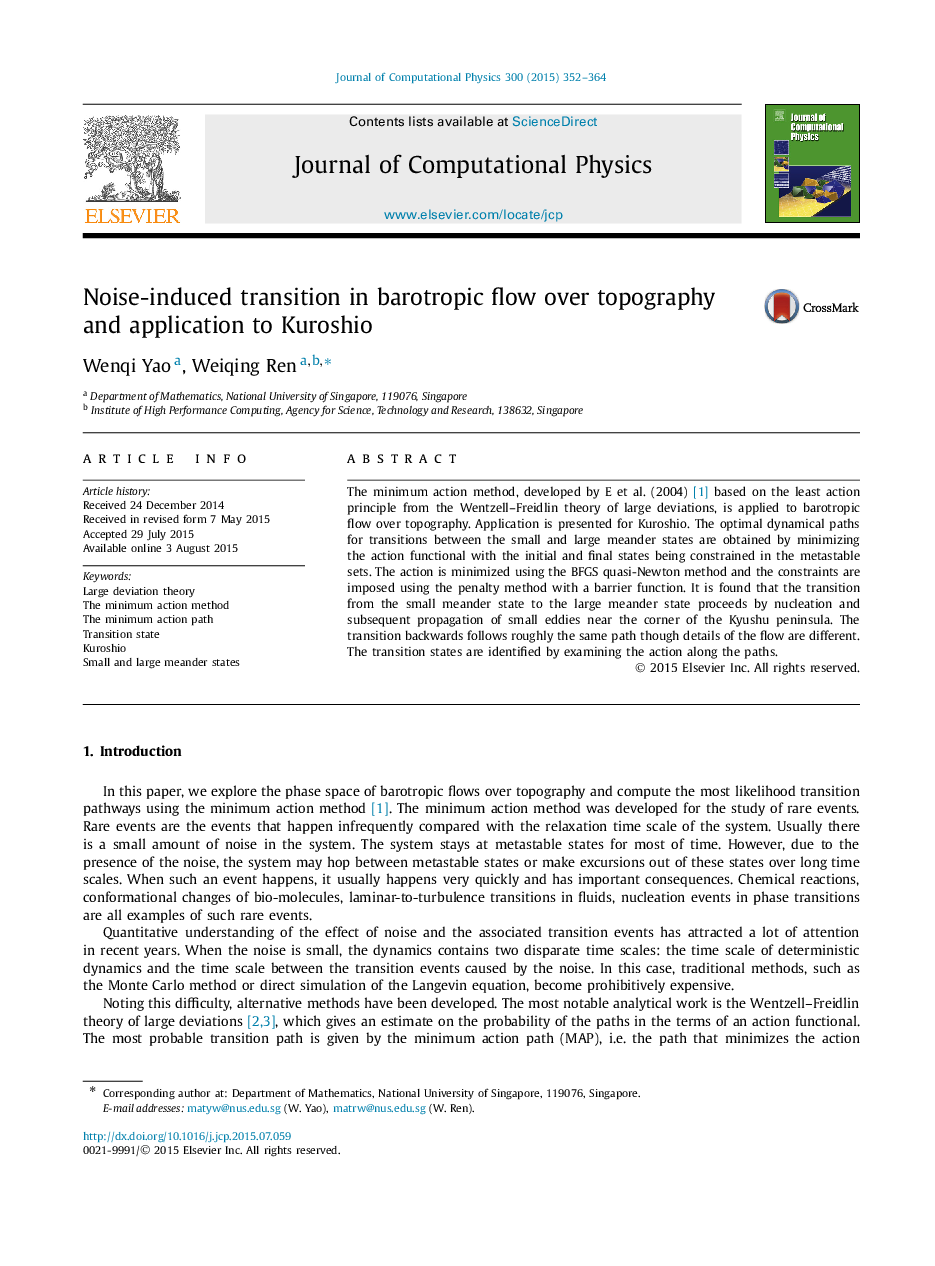| Article ID | Journal | Published Year | Pages | File Type |
|---|---|---|---|---|
| 518075 | Journal of Computational Physics | 2015 | 13 Pages |
The minimum action method, developed by E et al. (2004) [1] based on the least action principle from the Wentzell–Freidlin theory of large deviations, is applied to barotropic flow over topography. Application is presented for Kuroshio. The optimal dynamical paths for transitions between the small and large meander states are obtained by minimizing the action functional with the initial and final states being constrained in the metastable sets. The action is minimized using the BFGS quasi-Newton method and the constraints are imposed using the penalty method with a barrier function. It is found that the transition from the small meander state to the large meander state proceeds by nucleation and subsequent propagation of small eddies near the corner of the Kyushu peninsula. The transition backwards follows roughly the same path though details of the flow are different. The transition states are identified by examining the action along the paths.
